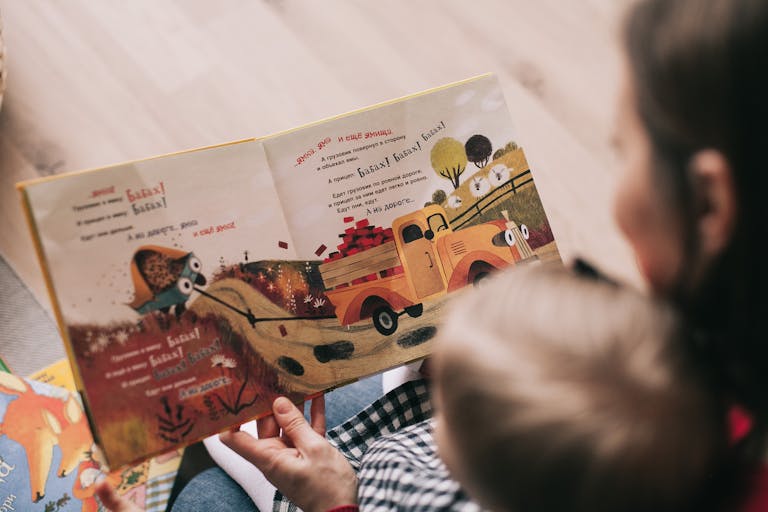Key Takeaways
- Educational apps can significantly enhance a child’s reading skills by providing interactive and engaging content.
- Look for apps that offer personalized learning paths tailored to your child’s reading level and interests.
- Immediate feedback from these apps helps children learn and improve faster.
- Using digital tools in moderation alongside traditional reading methods can balance learning.
- Parents should actively participate in their child’s digital learning to maximize benefits.
The Role of Technology in Complementing Children’s Reading
In today’s digital age, technology plays a pivotal role in children’s education. While traditional books remain essential, educational apps and tools have emerged as powerful allies in enhancing reading skills. These digital resources offer unique features that capture children’s attention and make learning an enjoyable experience.
Combining Digital Tools with Traditional Reading
Most importantly, it’s crucial to combine digital tools with traditional reading methods to create a balanced learning environment. While apps can offer interactive experiences, traditional books provide the tactile engagement that screens cannot. Together, they can enrich a child’s reading journey.
Why Technology Boosts Reading Skills
Technology can boost reading skills by offering diverse content that caters to different learning styles. Interactive features like games, quizzes, and animations make reading fun and engaging, encouraging children to explore more. Moreover, apps often use adaptive learning techniques to tailor content to the child’s pace, ensuring a personalized learning experience.
Benefits of Educational Apps in Reading
Educational apps bring several benefits to the table, making them a valuable tool in a child’s reading journey. They not only enhance engagement but also offer personalized learning paths and immediate feedback. For more ideas on keeping kids engaged, consider these winter reading activities.
Enhancing Engagement and Motivation
Apps are designed to captivate children’s interest through interactive content. Features like colorful animations, engaging storylines, and fun characters make reading exciting. This increased engagement leads to better retention and comprehension, motivating children to read more.
Offering Personalized Learning Paths
One of the standout features of educational apps is their ability to offer personalized learning paths. These apps assess a child’s reading level and preferences, then tailor content accordingly. This ensures that children receive material that is neither too easy nor too challenging, keeping them motivated and improving their skills progressively. For more ideas on how to keep kids engaged in reading, check out these winter reading activities.
Providing Immediate Feedback and Progress Tracking
Immediate feedback is crucial in the learning process, and educational apps excel in this area. They offer instant corrections and suggestions, helping children understand their mistakes and learn from them. Furthermore, many apps track progress over time, allowing parents to monitor their child’s development and adjust learning strategies as needed. For those looking to set goals, consider setting reading resolutions to encourage your child to read more.
Ensuring Accessibility and Convenience
With educational apps, learning becomes more accessible and convenient. Children can access reading materials anytime, anywhere, making it easier to incorporate reading into daily routines. This flexibility ensures that learning doesn’t stop outside the classroom, providing continuous opportunities for improvement. For ideas on how to make reading more engaging, check out these holiday reading adventures.
Top Educational Reading Apps for Kids
With countless educational apps available, it can be challenging to choose the right ones. Here are some top picks that stand out for their quality content and user-friendly features. Additionally, if you’re looking to encourage your child to read more, consider setting reading resolutions to make reading a fun and engaging activity.
Epic! Digital Library
Epic! offers an extensive digital library tailored for children aged 12 and under. With over 40,000 books, audiobooks, and learning videos, it provides a vast array of content to suit every child’s interests. The app’s intuitive interface makes it easy for kids to navigate and find books they love. For more options, explore other learn-to-read apps that you can’t miss out on.
Raz-Kids Interactive Books
Raz-Kids is an excellent choice for interactive reading. It provides leveled books that adapt to the child’s reading ability, ensuring they are always challenged but not overwhelmed. For more ways to keep kids engaged, consider trying a holiday reading challenge. The app includes:
- Comprehension quizzes
- Reading assignments
- Interactive games
These features help reinforce learning and make reading a rewarding experience. For more insights on what to look for in reading apps, check out Reading Apps for Kids: 6 Features to Look For.
Book Creator for Storytelling
- Offers an easy-to-use interface for creating digital books
- Encourages creativity by allowing children to add text, images, and audio
- Supports collaboration, enabling kids to work on projects together
Book Creator is an innovative app that empowers children to create their own stories. It provides a platform where kids can unleash their creativity by combining text, images, and even audio into a digital book format. This not only enhances their reading skills but also boosts their imagination and storytelling abilities.
By using Book Creator, children learn to structure stories, develop characters, and express ideas coherently. It’s an engaging way to encourage writing and reading simultaneously, making learning a fun and rewarding experience. Moreover, the app supports collaborative projects, allowing children to work together and learn from each other. For more insights, check out this list of apps for literacy and learning.
Parents can also get involved by reviewing their child’s creations and providing feedback. This interaction not only strengthens the parent-child bond but also helps improve the child’s literacy skills. For more ideas on how to engage with your child’s reading, consider participating in a holiday reading challenge.
Overall, Book Creator is a fantastic tool for nurturing a love for reading and writing, while also fostering creativity and collaboration among young learners. For more insights, check out these features to look for in reading apps.
Google Classroom Reading Management
Google Classroom is a versatile tool that can be effectively used for reading management. Teachers and parents can create assignments, distribute reading materials, and track progress all in one place. This makes it easier to organize and manage a child’s reading schedule. For additional resources, you can explore apps for literacy and learning to complement your child’s reading experience.
With Google Classroom, parents can monitor their child’s reading assignments and provide support when needed. The platform also allows for easy communication between parents, teachers, and students, ensuring everyone stays informed and engaged in the child’s reading journey.
Interactive Tools and Platforms for Enhanced Reading
In addition to educational apps, there are several interactive tools and platforms that can further enhance a child’s reading experience. These resources offer unique features that make reading more engaging and enjoyable. For more ideas on keeping kids engaged, consider exploring winter reading activities that can be enjoyed indoors.
Storyline Online Celebrity Readings
Storyline Online is a wonderful platform where celebrities read children’s books aloud. This engaging format not only entertains but also helps children develop listening and comprehension skills. The videos are accompanied by illustrations from the books, making the experience visually appealing as well. For more ways to engage children in reading, consider participating in a holiday reading challenge.
Reading Rockets Resource Hub
Reading Rockets offers a wealth of resources for parents and educators looking to support children’s literacy development. The platform provides articles, videos, and activities designed to improve reading skills and foster a love for reading. For more ideas, explore how to turn holiday stories into adventures.
“Reading Rockets is a great resource for parents and educators. It offers valuable insights and practical tips for supporting children’s literacy development.” – A satisfied user
By exploring Reading Rockets, parents can find strategies to help their children become confident and proficient readers. The platform also offers book recommendations and interactive activities to keep children engaged in their reading journey.
Overall, Reading Rockets is an invaluable tool for anyone looking to enhance a child’s reading experience and support their literacy growth. Additionally, exploring the importance of setting a good example can further aid in fostering a child’s love for reading.
Balancing Digital and Offline Reading
While digital tools offer numerous benefits, it’s essential to balance them with traditional reading methods. This ensures that children develop a well-rounded set of reading skills and avoid excessive screen time. For ideas on how to keep kids engaged, consider these winter reading activities that can complement both digital and offline reading experiences.
The Importance of a Balanced Approach
A balanced approach to reading combines the best of both digital and offline resources. This helps children develop diverse skills, such as critical thinking, comprehension, and creativity. By incorporating a variety of reading materials, parents can ensure their child receives a comprehensive literacy education. Learn more about setting a good example for reading.
Besides that, balancing digital and offline reading helps prevent over-reliance on screens, which can lead to potential issues such as reduced attention span or eye strain. By offering a mix of formats, parents can create a more engaging and enjoyable reading experience for their children. For guidance on selecting the right digital tools, consider these best learn-to-read apps that can complement your child’s reading journey.
- Introduce both digital and traditional books
- Set specific times for digital reading to avoid excessive screen time
- Encourage discussions about the content to develop critical thinking skills
By maintaining a balanced approach, parents can help their children develop a lifelong love for reading while ensuring their overall well-being. For more ideas, consider exploring reading resolutions that can motivate your child to read more.
Tips for Harmonizing Digital and Traditional Reading
To harmonize digital and traditional reading, start by setting clear guidelines for screen time and book reading. Encourage your child to explore different genres and formats, fostering a love for reading in all its forms. Engage with your child by discussing the stories they read, whether digital or print, to deepen their understanding and appreciation for literature. For additional ideas, explore these winter reading activities that keep kids engaged indoors.
Integrating Joke Books as a Fun Reading Tool
Incorporating humor into reading can be a powerful way to engage children and make learning enjoyable. Joke books offer a lighthearted approach to reading that can captivate a child’s interest and encourage them to explore new material.
Besides being entertaining, joke books help improve reading comprehension and vocabulary. By exposing children to different types of humor, they learn to appreciate language nuances and develop critical thinking skills. For more ways to engage your child in reading, consider exploring winter reading activities that keep kids engaged indoors.
Role of Humor in Balanced Reading
Humor plays a crucial role in balanced reading by making the experience enjoyable and relatable. It encourages children to engage with the material and develop a positive attitude towards reading. Joke books, in particular, offer a unique way to introduce humor into a child’s reading routine.
Benefits of Including Joke Books in Reading Routines
Including joke books in your child’s reading routine can have several benefits. They not only entertain but also help improve language skills, comprehension, and creativity. Joke books can also serve as a gateway to exploring other genres, sparking curiosity and encouraging a love for reading. For more insights, check out why joke books make the perfect holiday gift for kids.
Practical Tips for Using Joke Books
To make the most of joke books, consider incorporating them into your child’s reading routine in the following ways: explore learn-to-read apps that can complement the fun of joke books and enhance their literacy skills.
- Set aside specific times for joke book reading, such as before bedtime or during breaks
- Encourage your child to share their favorite jokes with family and friends
- Discuss the jokes and explore their meanings to enhance comprehension
By integrating joke books into your child’s reading routine, you can create a fun and engaging learning experience that fosters a love for reading and humor. For additional resources, explore apps for literacy and learning that can complement this activity.
Choosing the Right Apps and Tools for Your Child
With so many educational apps and tools available, it’s essential to choose the right ones for your child. Consider their needs, preferences, and reading level to ensure they receive the most effective support in their reading journey. For guidance, check out this ranking of the best learn-to-read apps in 2024.
Assessing Your Child’s Needs and Preferences
- Identify your child’s interests and reading preferences
- Consider their current reading level and areas for improvement
- Evaluate their learning style to find apps that suit their needs
By understanding your child’s unique needs and preferences, you can select apps and tools that will engage and motivate them to improve their reading skills.
It’s important to involve your child in the decision-making process. Discuss their interests and preferences, and explore different apps together to find the ones that resonate with them. This collaborative approach ensures that your child feels invested in their learning journey. For more ideas, consider setting reading resolutions together.
Moreover, consider seeking recommendations from teachers or other parents who have experience with educational apps. Their insights can help you make informed decisions and find the best resources for your child.
Ensuring Age and Reading Level Appropriateness
When selecting educational apps, it’s crucial to ensure they are age-appropriate and match your child’s reading level. Look for apps that offer leveled content, allowing your child to progress at their own pace while being challenged appropriately. For more ideas on how to keep your child engaged, consider exploring winter reading activities that are both fun and educational.
Evaluating Usability and Accessibility
Usability and accessibility are key factors to consider when choosing educational apps. Ensure that the app’s interface is user-friendly and intuitive, making it easy for your child to navigate and engage with the content. Additionally, consider whether the app offers features like text-to-speech or adjustable font sizes to accommodate different learning needs. For more tips on encouraging your child to read, check out our guide on how to encourage your child to read more.
Maximizing the Benefits of Educational Apps
Educational apps can be powerful tools in a child’s reading journey, but to maximize their benefits, it’s essential to use them effectively. Establishing clear guidelines and actively engaging with your child’s digital reading can make a significant difference. For additional tips on engaging reading activities, explore these winter reading activities to keep kids engaged indoors.
Establishing Usage Guidelines
Setting usage guidelines ensures that your child uses educational apps responsibly and effectively. Here are some tips to help you establish these guidelines: consider the importance of setting a good example by being a role model in their educational journey.
- Set specific times for using educational apps, such as after homework or on weekends.
- Limit screen time to prevent overuse and ensure a balanced lifestyle.
- Encourage breaks to rest eyes and avoid digital fatigue.
By establishing these guidelines, you can help your child develop healthy habits and make the most of their digital learning experiences. For more ideas on keeping kids engaged indoors, explore winter reading activities.
Engaging with Your Child’s Digital Reading
Engaging with your child’s digital reading is crucial for their success. By showing interest in their learning, you can motivate them to explore and discover new content. Consider participating in a holiday reading challenge to keep them engaged over the winter break.
Most importantly, take the time to discuss the stories and activities they encounter in the apps. Ask open-ended questions to encourage critical thinking and deeper understanding. For example, you might ask, “What did you learn from this story?” or “How do you think the character felt?” For more ideas on keeping kids engaged, check out these winter reading activities.
This active engagement helps reinforce learning and strengthens the parent-child bond, making reading a shared and enjoyable experience. For more ideas, explore these apps for literacy and learning that can further enhance your child’s reading journey.
Monitoring Progress and Making Adjustments
Regularly monitoring your child’s progress is essential for ensuring they are benefiting from educational apps. Most apps offer progress tracking features, allowing you to see how your child is doing and where they may need additional support. For more ideas on keeping your child engaged, check out these winter reading activities.
Use this information to make necessary adjustments to their learning plan. If your child is struggling with a particular concept, consider supplementing their digital learning with traditional resources or seeking additional support from teachers or tutors. Additionally, you can explore creating a reading plan together to further support their learning journey.
Encouraging Critical Thinking Through Apps
Educational apps offer opportunities to develop critical thinking skills by presenting challenges and problem-solving activities. Encourage your child to think critically about the content they encounter in these apps by engaging in winter reading activities that complement their learning experience.
Ask questions that prompt them to analyze, evaluate, and synthesize information. For example, you might ask, “What would you do differently if you were the character?” or “How does this story relate to real-life situations?”
By fostering critical thinking, you help your child become a more independent and confident reader. Consider setting reading resolutions to encourage your child to read more in the new year.
Final Thoughts on Educational Tools for Reading
Educational tools, including apps, play a significant role in supporting a child’s reading journey. When used effectively, they can complement traditional reading methods and create a well-rounded learning experience. For more ideas, check out these winter reading activities to keep kids engaged indoors.
The Importance of a Balanced Reading Approach
A balanced reading approach combines the best of both digital and traditional resources. This ensures that children develop a comprehensive set of reading skills and fosters a lifelong love for reading. For ideas on how to get your kids excited about reading, check out these top stocking stuffers.
By incorporating a variety of reading materials, parents can provide a rich and engaging learning environment that supports their child’s literacy development. For additional resources, explore literacy apps that can complement traditional reading methods.
Advantages of Combining Digital and Traditional Reading Methods
Combining digital and traditional reading methods offers several advantages. Digital tools provide interactive and engaging content that captures children’s interest, while traditional books offer tactile experiences that enhance comprehension and retention. For more insights on digital tools, explore reading apps for kids.
Together, these methods create a holistic reading experience that supports diverse learning styles and preferences. For instance, incorporating holiday stories into adventures can make reading more engaging for children.
Your Joke Books as an Engaging Complementary Resource
Joke books are an excellent addition to a child’s reading routine, offering a fun and engaging way to explore language and humor. They can serve as a gateway to other genres and help improve reading comprehension and vocabulary. To further encourage your child to read more, consider setting reading resolutions together.
By incorporating joke books into your child’s reading routine, you can create a balanced and enjoyable learning experience that fosters a love for reading and humor.
Encouraging Exploration and Engagement
Encouraging exploration and engagement is key to a successful reading journey. By providing diverse reading materials and actively participating in your child’s learning, you can inspire curiosity and motivate them to discover new content. For instance, you can use winter reading activities to keep kids engaged indoors.
Most importantly, celebrate their achievements and support their growth, helping them become confident and proficient readers. Consider setting reading resolutions to encourage them to read more.
Frequently Asked Questions
As parents explore educational apps and tools for reading, several common questions arise. Here are some answers to help guide your decisions. For more on encouraging reading habits, check out our article on winter reading activities.
How do educational apps enhance reading skills?
Educational apps enhance reading skills by providing interactive and engaging content that captures children’s interest. They offer personalized learning paths and immediate feedback, helping children improve their skills at their own pace. For more ideas on keeping kids engaged, check out these winter reading activities.
What are the best apps for young children learning to read?
Some of the best apps for young children include Epic! Digital Library, Raz-Kids Interactive Books, ABCmouse Comprehensive Learning, Homer Personalized Reading Plans, and TumbleBooks Animated Storybooks. These apps offer quality content and user-friendly features that support early literacy development. For more information on selecting the right app, check out this guide on best learn-to-read apps.
How can I ensure my child doesn’t spend too much screen time?
To prevent excessive screen time, establish clear usage guidelines and set specific times for using educational apps. Encourage breaks and balance digital learning with traditional reading methods to create a well-rounded learning experience.
Are digital reading tools effective for struggling readers?
Yes, digital reading tools can be effective for struggling readers by providing personalized learning paths and immediate feedback. They offer engaging content that captures interest and motivates children to improve their skills. For more ideas on how to make reading enjoyable, consider exploring how to turn holiday stories into adventures.
Where can I find reliable reviews for educational apps?
Reliable reviews for educational apps can be found on reputable websites and platforms dedicated to educational resources. Consider seeking recommendations from teachers, other parents, or educational forums to find the best apps for your child.
- Read reviews on educational websites and forums
- Ask for recommendations from teachers and other parents
- Explore app stores for user ratings and feedback
By taking these steps, you can find reliable reviews and make informed decisions about the best educational apps for your child.






One Comment